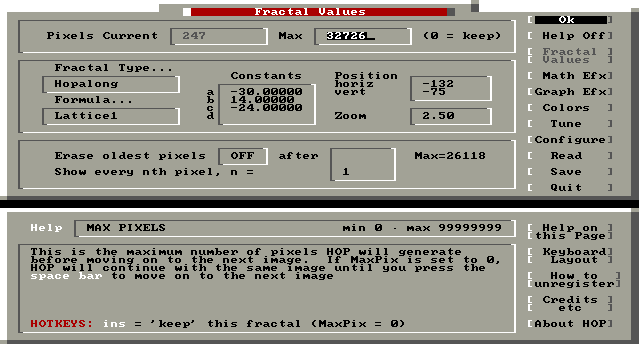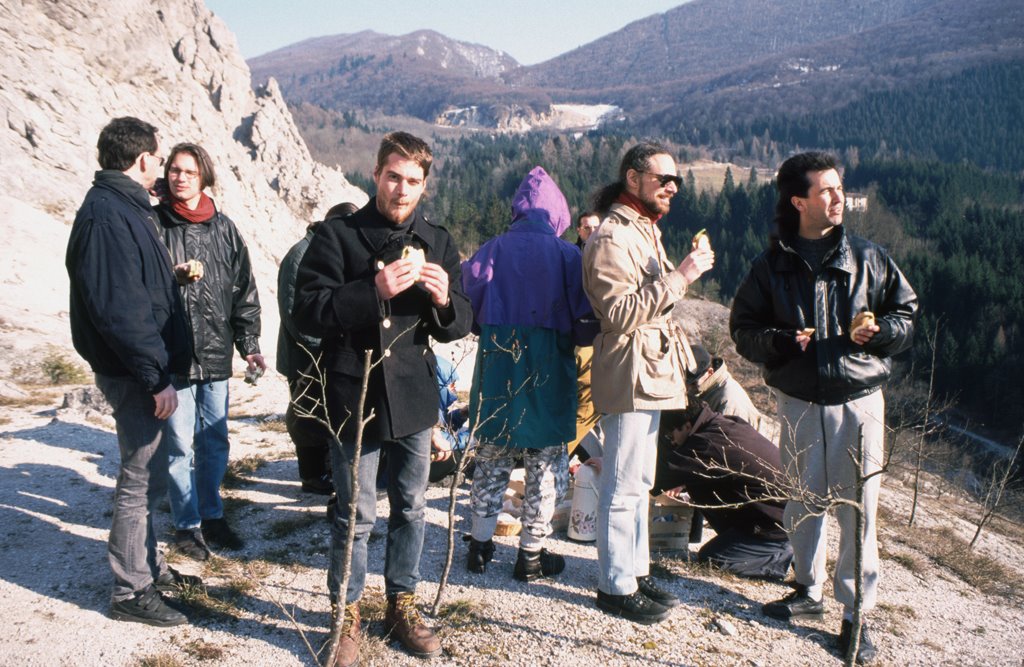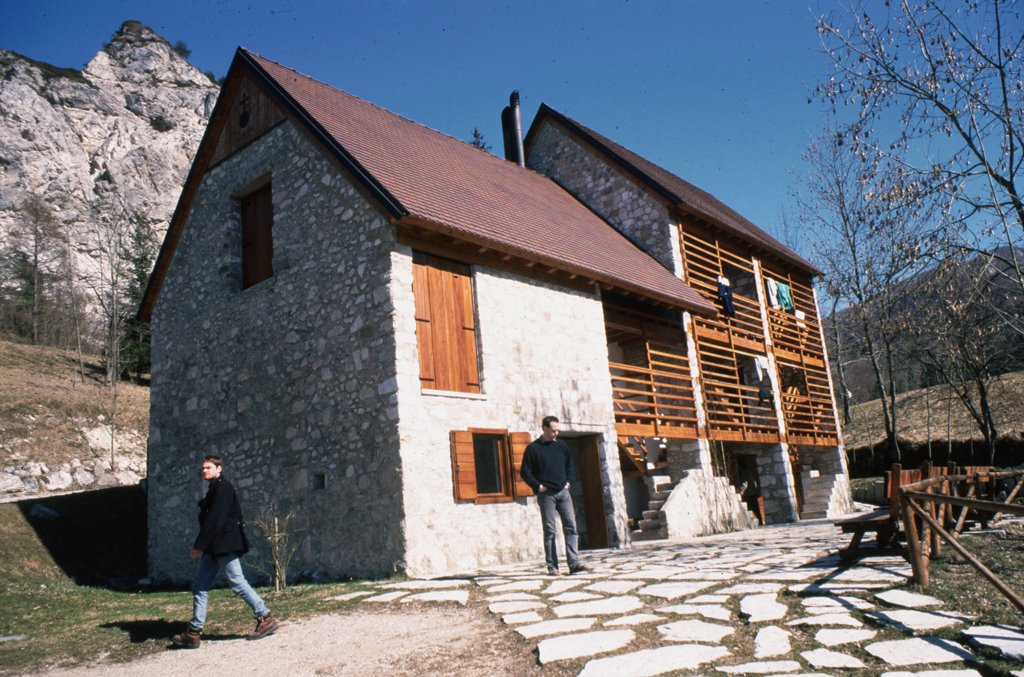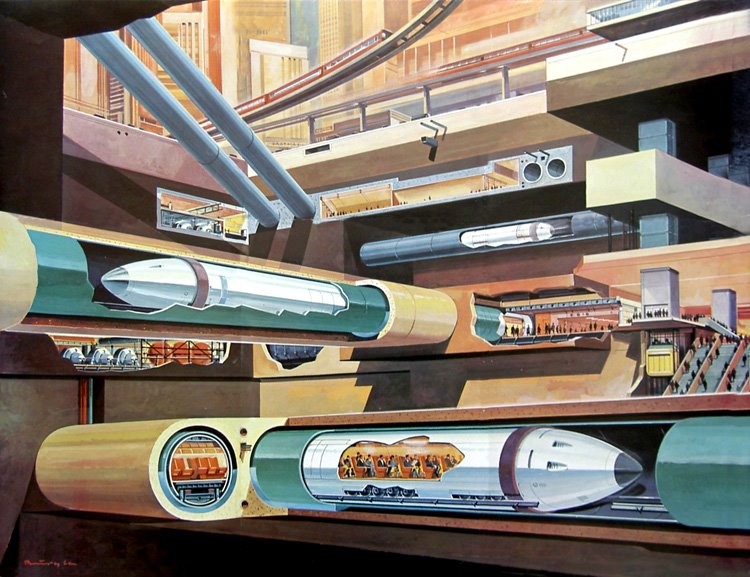
Algorithmic Music – music composed without human intervention, based on formal procedures, mathematical formulas, computer programs.
Gumowski and Mira – two CERN physicists who found an interesting mathematical entity, a new attractor – something not unlike a fractal – while researching into nonlinear dynamical systems. It was later called the Gumowski-Mira attractor.

HOP – a software that I wrote in the early nineties which created graphics based on this attractor. It was successful as a DOS screensaver. Then one day, I added a Midi output module, hooked a digital piano to it, and found that the resulting musical structures were very interesting.
Impossible Music – a collection of 16 improvisations with that Gumowski-Mira attractor based software. While the computer computed the attractor, I played with the constants and various other variables, and Matthias Ebbinghaus took care of the sampler, the digital piano pedals, and the live mix.
hyperfunction – a CD label for algorithmic music, launched by Markus Reuter and me, with Impossible Music being the first release.
Thanks to Matthias Ebbinghaus’s initiative, we finally have a beautiful CD with quite adventurous recordings that we had done 13 years ago, at this time not thinking about publishing them at all. The DAT tape had been sleeping in some drawer and I had more or less forgotten it but about three years ago, Matthias remembered it and suggested that we listen to it again, maybe for a potential CD release. So we listened to it again, found that we liked it a lot, selected the most interesting parts, remastered it … and then I talked to Markus Reuter about it and he suggested setting up a label for algorithmic music and publish it there.
Here’s what WIRE magazine just wrote about the CD (in the April 2009 issue). Maybe they have a point criticizing that we used familiar instrument sounds (mainly piano and percussion) for music that is so non-traditional. For me though, this music stands out because it is structurally interesting – maybe turning these strange structures into equally strange sounds would even take away some of the structural strangeness – I don’t know. (In 1996, I simply had no stranger sounds at my hands anyway 🙂
Algorithms – essentially, objectified sequences of instructions – can, as John Cage recognised, produce results that personal taste might have precluded, and figures as diverse as Xenakis and Eno have used such procedures effectively. Limited interventions, such as those Peters makes, add an improvisatory aspect that can conjure up further structural variation and surprise. But beyond the glacial satisfactions of the concept and a sense of the abstracted structure, the pleasure of such music necessarily depends on the quality of the sound material. Most of the samples Peters uses are percussion. There are classical guitar-like timbres on „Alhambra Algebra“, synthetic pipe organ sonorities on „Blow Up Meltdown“, marirnba tones on „Woodenfall“. The digital piano often approximates a concert grand. It’s done well, but surely strange attractors cry out for wilder and less familiar sounds. (Julian Cowley)
We will try how this music sounds with more adventurous sounds on April 4 – there will be a CD release party at the LOFT in Cologne, and while I am in control of the attractors, Bernhard Wöstheinrich and his synthesizers will make them sound. Watch this space for a report if you can’t come.
More Gumowski-Mira attractors:










































































